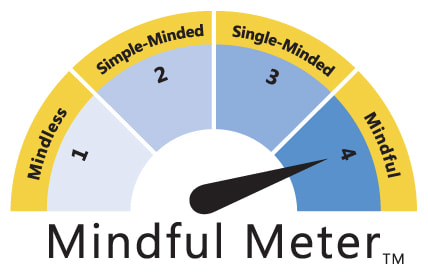Gradually, his living is becoming a life, and it’s happening in the last place he’d expect: a church.
Jake’s making friends there, his first since becoming a parent. The chronic loneliness of his life—he didn’t even know how bad it was—is subsiding. There’s more peace in his household, too, probably because there’s more peace in Jake. The kids notice that dad’s different; Jake and his wife have turned back the clock 10 years. The aquifer of anger just beneath the surface has dried up.
Gone as well is Jake’s misperception of God. He’s learning that God really does love him. That’s changed everything, giving Jake a new identity—his real identity.
Now multiply Jake’s experience by a hundred thousand. Maybe more. Research I’m conducting across the United States reveals that there are countless Jakes out there because a few innovative churches have figured out how to reach them.
Why Some Churches Target Men
The concept of a “target market” is Business 101, just as the analogous concept of a “target people group” is Missions 101. It’s axiomatic. It works. From a theological perspective, it’s good stewardship.
So consider the logic of “adult men,” or some subset, being a church’s primary target. First, a scant one in five men attends religious services weekly in the United States. Second, there’s the longstanding gender gap: Sit in the back pew this Sunday and you can count 50 percent more women than men. And third, targeting men seems to accelerate church growth. Consider these strikingly-consistent perspectives from senior pastors I interviewed:
- “It’s a very simple argument: You reach the man, you reach the family.”
- “If the men are respected and feel comfortable in your church, the families will follow.”
- “We stumbled into this strategy: If you get the man, you often get everyone in his circle.”
- “We asked ‘how do we reach the most people?’ and it seemed that if we could reach the husband or the dad, then we had a good shot at reaching the rest.”
The churches in my study do not appear to be part of some masculinity movement. Rather, they’ve simply adopted an efficient and catalytic strategy: Get the man, get the family. The approach not only reaches a vast and underserved “people group,” it has the byproduct effect of bringing in women and children by the vanload.
Perhaps that’s why most of these churches have gone from start-up to thousands in weekly attendance in a mere decade or two. One, in fact, now attracts 10,000 visitors a week system-wide. Another attracts 27,000.
As a strategy professor, I can’t say I’m surprised by the growth. These churches are pursuing what’s known in my world as a “blue ocean strategy,” the disproportionately powerful decision to go where the “non-customers” are—that is, to serve an ignored segment of the market that would buy your product under the right conditions. The pastors have simply provided the right conditions, enabling their churches to claim, again, to use the business language, “uncontested market space” (i.e., the men who would not be in any church otherwise).
Hence the metaphor of operating in an undisturbed “blue ocean.” No competition there, only demand. It’s the same approach that propelled Henry Ford, Milton Hershey, Sam Walton, and Steve Jobs. Many others as well: Southwest Air, CNN, Home Depot, Airbnb, Cirque du Soleil, Starbucks, Nintendo, Netflix, Quicken—all have soared by serving those formerly on the sidelines.
My emerging sense is that there is plenty of room in that blue ocean for churches beyond those in this study. In other words, there seems to be a wide-open space for more effective evangelism and discipleship of men, and by extension, those in their sphere of influence. Let me introduce you to a few exemplars.
Seven Man-Friendly Churches
For this project, I found seven churches overflowing with men. They’re not that way by chance. Rather, they’ve been intentional, even relentless, about pursuing men as their primary “target people group.” In alphabetical order, the churches in this study are:
- 121 Community Church, Grapevine TX, Founding Pastor Ross Sawyers
- Christ’s Church of the Valley (CCV), Peoria AZ, Founding Pastor Don Wilson
- Coastal Church, Daphne AL, Founding Pastor Chad Stafford
- Mecklenburg Community Church, Charlotte NC, Founding Pastor Jim White
- Northwood Church, Summerville SC, Founding Pastor Fred Richard
- Revolution Church, Tucson AZ, Founding Pastor Josh Reich
- Wheatland Salem United Methodist Church, Naperville IL, Pastor Jennifer Wilson
Each is man-friendly at its core, designed to reach the unreached. Their goals and strategies make that plain. So do these quotes from some of the senior pastors I interviewed:
“I have the Biblically-illiterate, f-bomb-dropping guy in my head with every talk I write.”
“The person we’re trying to connect with is the 20- to 40-year-old guy who comes in, probably late, sits in the back row, folds his arms and says ‘God, this is your last shot.’”
“Our target is the young dad who was in a fraternity, went to church and hated it, is now working 60 hours a week. He’s more in need of community than he’s ever been in his life; he’s so disconnected from God.”
One pastor summed it up straightforwardly for them all: “I go after guys who were raised Christian, but who haven’t been to church in a while.” Simple. Focused. The classic hedgehog technique from Good to Great.
How do they do it? Their implementation weaves its way through the music, the messages, the staffing choices, the platforming and promotions, even the colors and decor. They’ve replaced flowers and pastels with earth tones and lobby screens tuned to ESPN. They avoid love songs to Jesus and other language that makes guys feel weird. They keep the service to an hour, the messages to a half-hour, and the content intensely practical.
And they do so much more. You can find the details in this Christianity Today article or these more in-depth pieces on LinkedIn and on YouTube.
Women and Children Love These Churches, Too
While it’s possible to become a man-friendly church at the expense of others, the leaders I interviewed seem better than that, seeking win-wins. Most, for example, have gone big with children’s ministry—huge, in fact—not just to serve the kids, but because guys who won’t come to church for themselves will attend if their kids love it.
Women are also enthusiastic about these churches, according to the leadership. Ecstatic in many cases. This quote from one of the pastors echoes what I heard from several of them: “No lady has ever said we’re too masculine. But I’ve had dozens of them come to me with tears in their eyes, saying ‘I’ve been trying to get my husband to go to church for 20 years and this is the only church he will ever go to. Thank you so much!’”
While this research is ongoing, my preliminary conclusion is that these church leaders have found an approach that is working for everyone, reaching thousands who would otherwise remain alienated from God, and offering us a novel, nonprofit example of “Mindful Marketing.”
Learn more about the Mindful Matrix and Mindful Meter.
Check out Mindful Marketing Ads and Vote your Mind!




 RSS Feed
RSS Feed